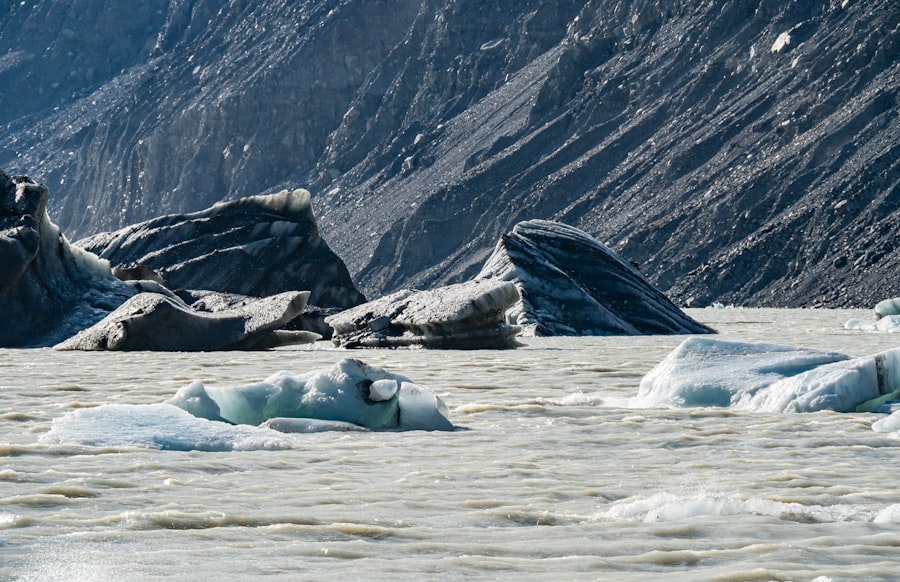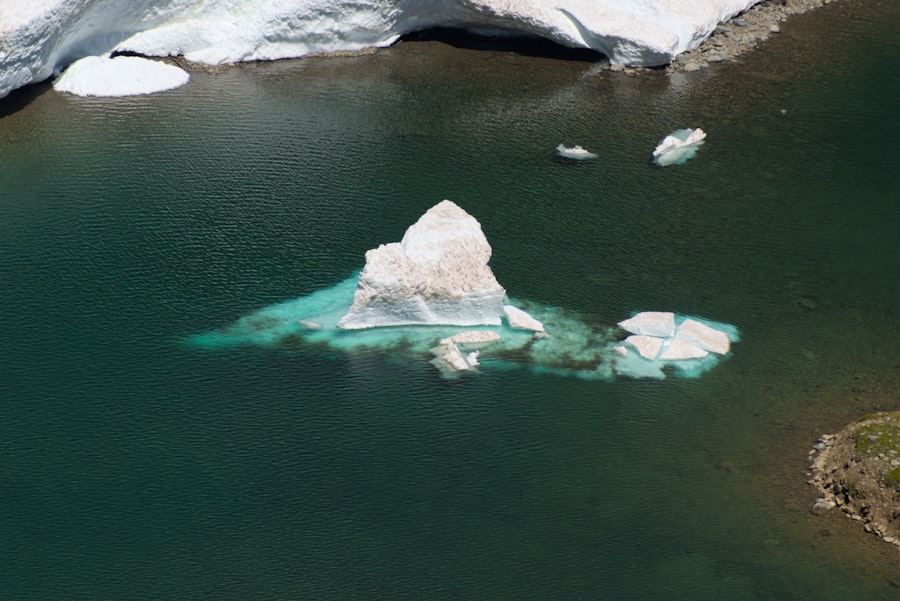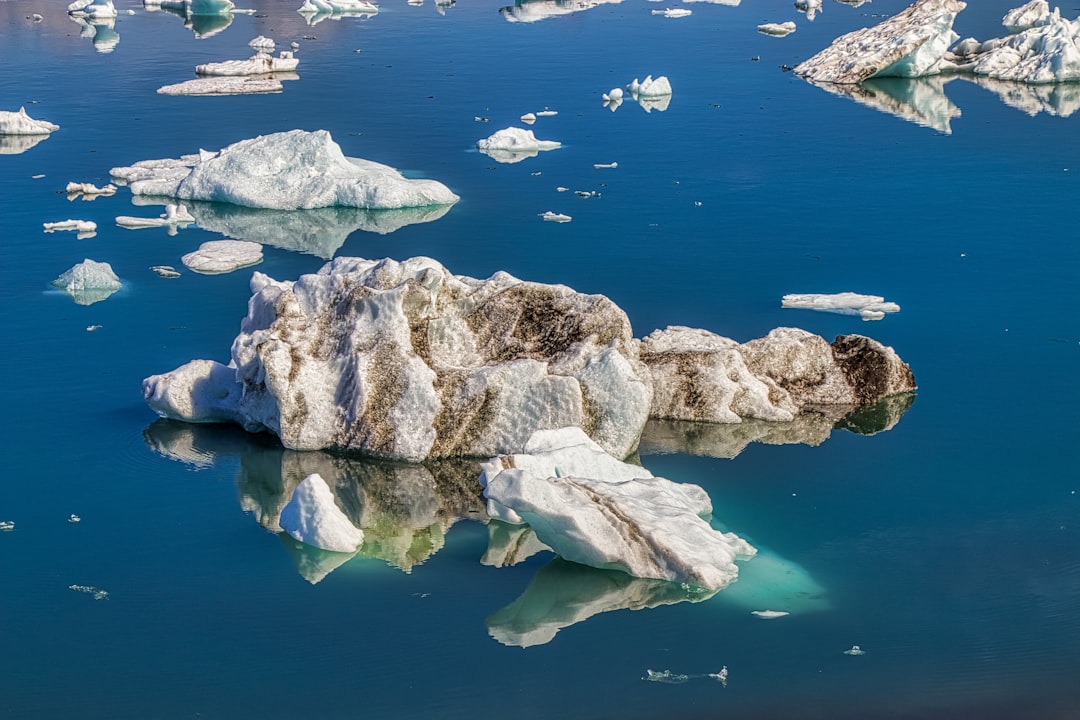As you delve into the environmental crisis facing Greenland, you will uncover a complex tapestry of challenges that intertwine climate change, ecological degradation, and socio-economic issues. Greenland, the world’s largest island, is often perceived as a remote and pristine wilderness.
The urgency of this crisis cannot be overstated, as it not only affects the local population but also has far-reaching implications for the entire planet. You may find it alarming that the changes occurring in Greenland are not isolated phenomena. They serve as a bellwether for global environmental trends.
The melting ice sheets, rising sea levels, and loss of biodiversity are just a few of the symptoms of a much larger problem—climate change. As you explore this article, you will gain insight into how these issues are interconnected and why they demand immediate attention from both local and international communities.
Key Takeaways
- Greenland is facing an environmental crisis due to the melting ice sheet, loss of biodiversity, pollution, and threats to indigenous communities.
- The melting ice sheet in Greenland is a major concern as it contributes to rising sea levels globally.
- The environmental crisis in Greenland has a significant impact on global sea levels, leading to potential coastal flooding and displacement of communities.
- Loss of biodiversity and ecosystems in Greenland is a result of climate change and poses a threat to the region’s natural balance.
- Indigenous communities in Greenland are facing threats to their traditional way of life due to the environmental crisis, including loss of hunting grounds and contamination of water sources.
The Melting Ice Sheet: A Major Concern
One of the most pressing concerns regarding Greenland’s environmental crisis is the rapid melting of its ice sheet. This vast expanse of ice, which covers approximately 80% of the island, is shrinking at an alarming rate. You may be surprised to learn that recent studies indicate that Greenland’s ice sheet is losing mass at a rate of about 280 billion tons per year.
This dramatic loss is primarily attributed to rising temperatures, which have increased significantly over the past few decades. As you consider the implications of this melting ice sheet, it becomes clear that it is not merely a local issue. The ice sheet acts as a critical component of the Earth’s climate system, reflecting sunlight and helping to regulate global temperatures.
Its rapid decline not only contributes to rising sea levels but also disrupts weather patterns around the world. You might find it unsettling to realize that the consequences of this melting ice extend far beyond Greenland’s borders, affecting millions of people globally.
Impact on Global Sea Levels

The melting of Greenland’s ice sheet has profound implications for global sea levels, a concern that should resonate with you as a global citizen. As the ice melts, it contributes to an increase in ocean volume, leading to rising sea levels that threaten coastal communities worldwide. You may be surprised to learn that scientists estimate that if the entire Greenland ice sheet were to melt, global sea levels could rise by more than 20 feet.
This scenario, while extreme, underscores the urgency of addressing the ongoing crisis. As you reflect on this issue, consider the potential consequences for cities like New York, Miami, and Tokyo, which are already grappling with flooding and erosion. The threat posed by rising sea levels is not just a future concern; it is a present reality for many coastal regions.
You might find it alarming that some areas are already experiencing increased flooding during high tides and storms, leading to significant economic and social challenges. The interconnectedness of these issues highlights the need for immediate action to mitigate the impacts of climate change.
Loss of Biodiversity and Ecosystems
| Metrics | 2010 | 2020 | 2030 |
|---|---|---|---|
| Number of species at risk | 10,000 | 15,000 | 20,000 |
| Deforestation rate (hectares per year) | 5 million | 8 million | 10 million |
| Percentage of coral reefs lost | 30% | 50% | 70% |
The environmental crisis in Greenland is not limited to melting ice sheets and rising sea levels; it also encompasses a significant loss of biodiversity and disruption of ecosystems. As temperatures rise, many species that have adapted to Greenland’s unique environment are struggling to survive. You may be surprised to learn that some marine species are migrating northward in search of cooler waters, while terrestrial animals face habitat loss due to changing landscapes.
The loss of biodiversity is particularly concerning because it threatens the delicate balance of ecosystems that have existed for millennia. As you consider the implications of this loss, think about how interconnected these ecosystems are with human life. Indigenous communities rely on these natural resources for their livelihoods, cultural practices, and food security.
The decline in biodiversity not only affects wildlife but also jeopardizes the traditional ways of life for those who have called Greenland home for generations.
Threats to Indigenous Communities
Indigenous communities in Greenland are facing unprecedented challenges as their environment changes around them. You may find it heartbreaking to learn that these communities, who have lived in harmony with nature for centuries, are now grappling with the consequences of climate change. The melting ice and shifting ecosystems threaten their traditional hunting and fishing practices, which are vital for their sustenance and cultural identity.
As you explore this issue further, consider how these changes impact not only food security but also mental health and community cohesion. The loss of traditional ways of life can lead to feelings of disconnection and despair among Indigenous peoples. You might feel compelled to advocate for their rights and support initiatives that empower these communities to adapt to changing conditions while preserving their cultural heritage.
Pollution and Contamination of Water Sources

In addition to climate-related challenges, Greenland faces significant pollution and contamination issues that exacerbate its environmental crisis. You may be surprised to learn that industrial activities, mining operations, and shipping routes contribute to pollution in this seemingly remote region. Heavy metals and other contaminants can seep into water sources, posing serious health risks to both humans and wildlife.
As you consider the implications of water contamination, think about how access to clean water is fundamental for any community’s survival. For Indigenous populations in Greenland, whose lifestyles are closely tied to their natural environment, polluted water sources can have devastating effects on health and well-being. You might feel a sense of urgency to support efforts aimed at reducing pollution and protecting vital water resources in Greenland.
The Role of Climate Change in Greenland’s Environmental Crisis
At the heart of Greenland’s environmental crisis lies climate change—a phenomenon driven by human activity that has far-reaching consequences for ecosystems and communities alike. You may find it enlightening to understand how greenhouse gas emissions from industrialized nations contribute to rising temperatures in Greenland. As global temperatures continue to rise, the effects are felt most acutely in polar regions like Greenland.
As you reflect on this issue, consider how climate change exacerbates existing vulnerabilities within Greenland’s environment and society. The interplay between rising temperatures, melting ice sheets, and biodiversity loss creates a feedback loop that intensifies the crisis. You might feel compelled to engage in discussions about climate action and advocate for policies that address the root causes of climate change while supporting vulnerable communities.
International Efforts to Address the Crisis
Recognizing the urgency of Greenland’s environmental crisis, international efforts have emerged to address these pressing challenges. You may be interested to learn about various initiatives aimed at mitigating climate change impacts and promoting sustainable development in Greenland. Organizations such as the Arctic Council and various non-governmental organizations are working collaboratively with local communities to develop strategies for adaptation and resilience.
As you explore these international efforts further, consider how they reflect a growing awareness of the interconnectedness of global environmental issues. The challenges faced by Greenland are not isolated; they resonate with similar struggles experienced by other regions around the world. You might feel inspired by the potential for collective action to create meaningful change and protect vulnerable ecosystems and communities.
The Importance of Sustainable Development in Greenland
Sustainable development is crucial for addressing Greenland’s environmental crisis while ensuring economic growth and social equity. You may find it compelling to explore how sustainable practices can help balance economic interests with environmental protection. By investing in renewable energy sources, sustainable tourism, and responsible resource management, Greenland can pave the way for a more resilient future.
As you consider the importance of sustainable development, think about how it can empower local communities and promote cultural preservation. By prioritizing environmentally friendly practices, Greenland can create opportunities for economic growth without compromising its unique natural heritage. You might feel motivated to support initiatives that promote sustainability in Greenland and advocate for policies that prioritize long-term ecological health.
Potential Solutions and Mitigation Strategies
Addressing Greenland’s environmental crisis requires innovative solutions and effective mitigation strategies. You may find it encouraging to learn about various approaches being explored by scientists, policymakers, and local communities alike. These solutions range from enhancing renewable energy infrastructure to implementing conservation programs aimed at protecting vulnerable species and habitats.
As you reflect on potential solutions, consider how community engagement plays a vital role in their success. Involving Indigenous peoples in decision-making processes ensures that their knowledge and perspectives are integrated into conservation efforts. You might feel inspired by grassroots movements advocating for environmental justice and sustainability in Greenland, recognizing that collective action can lead to meaningful change.
The Urgency of Taking Action
The urgency of taking action in response to Greenland’s environmental crisis cannot be overstated. As you absorb the information presented throughout this article, you may feel a growing sense of responsibility to advocate for change—both locally and globally.
You might find it empowering to engage with organizations working on climate action or participate in community initiatives aimed at raising awareness about Greenland’s challenges. By amplifying voices advocating for sustainable practices and supporting policies that prioritize environmental protection, you can contribute to a collective effort toward a more sustainable future for Greenland and our planet as a whole. The time for action is now; every step taken today can help shape a better tomorrow for generations to come.
In recent years, the environmental disaster unfolding in Greenland has garnered significant attention due to its alarming implications for global sea levels and climate change. The rapid melting of Greenland’s ice sheet is a stark indicator of the accelerating impacts of global warming. For more insights into this pressing issue, you can read a related article on the topic by visiting this page. This article delves into the causes and potential consequences of the ice melt, highlighting the urgent need for international cooperation to address climate change.
WATCH THIS! Greenland’s Ice Is Hiding A Nuclear Time Bomb
FAQs
What is the environmental disaster in Greenland?
The environmental disaster in Greenland refers to the melting of the Greenland ice sheet, which is the second largest ice sheet in the world. This melting is a result of climate change and has significant implications for global sea level rise.
How is the environmental disaster in Greenland impacting the environment?
The melting of the Greenland ice sheet is leading to rising sea levels, which can result in coastal flooding and erosion. It also contributes to changes in ocean currents and weather patterns, impacting ecosystems and wildlife both locally and globally.
What are the potential long-term effects of the environmental disaster in Greenland?
The long-term effects of the environmental disaster in Greenland include continued sea level rise, loss of habitat for Arctic wildlife, and changes in global climate patterns. These effects can have far-reaching consequences for human populations, biodiversity, and the overall health of the planet.
What is being done to address the environmental disaster in Greenland?
Efforts to address the environmental disaster in Greenland include international agreements to reduce greenhouse gas emissions, research on the impacts of melting ice sheets, and initiatives to adapt to the changing climate. Additionally, there are ongoing discussions about the role of sustainable development and renewable energy in mitigating the effects of climate change.
